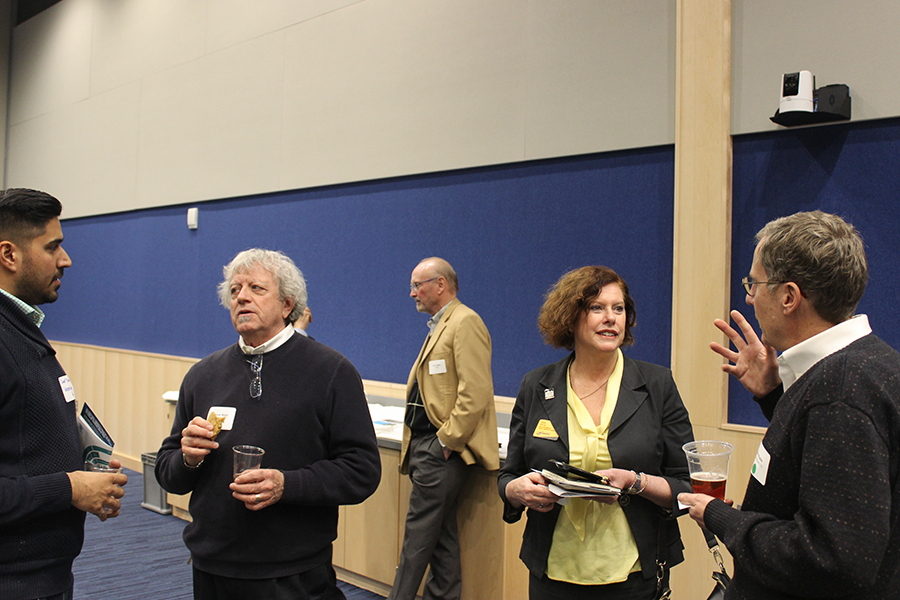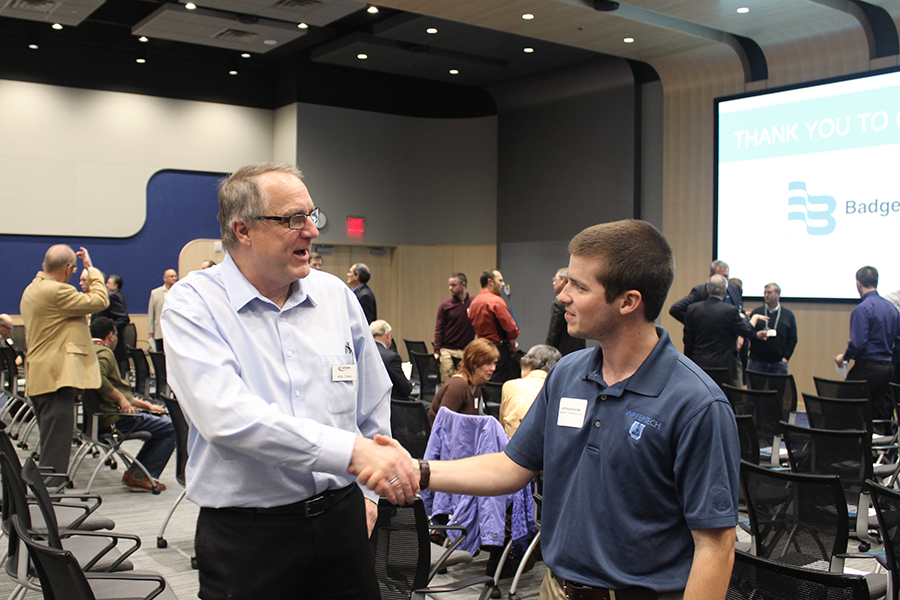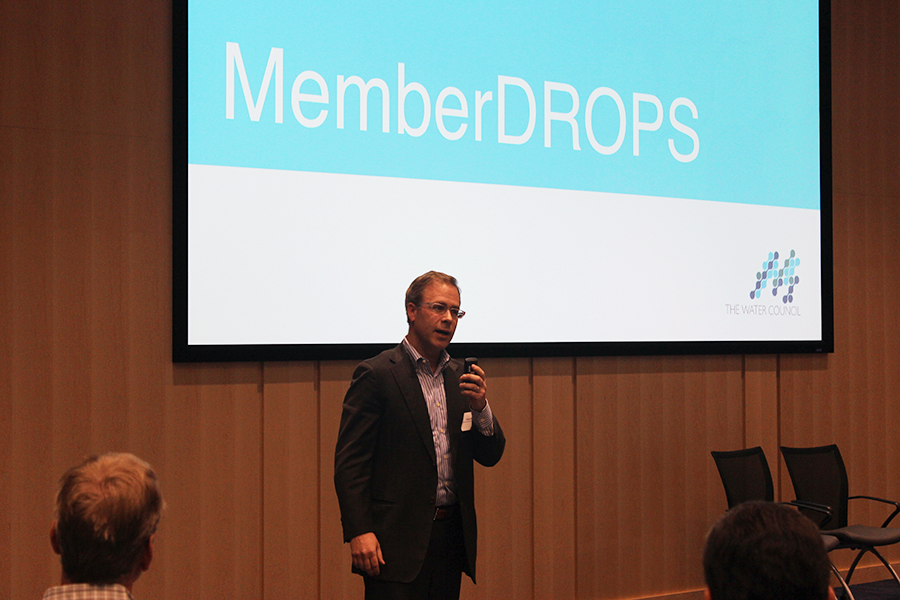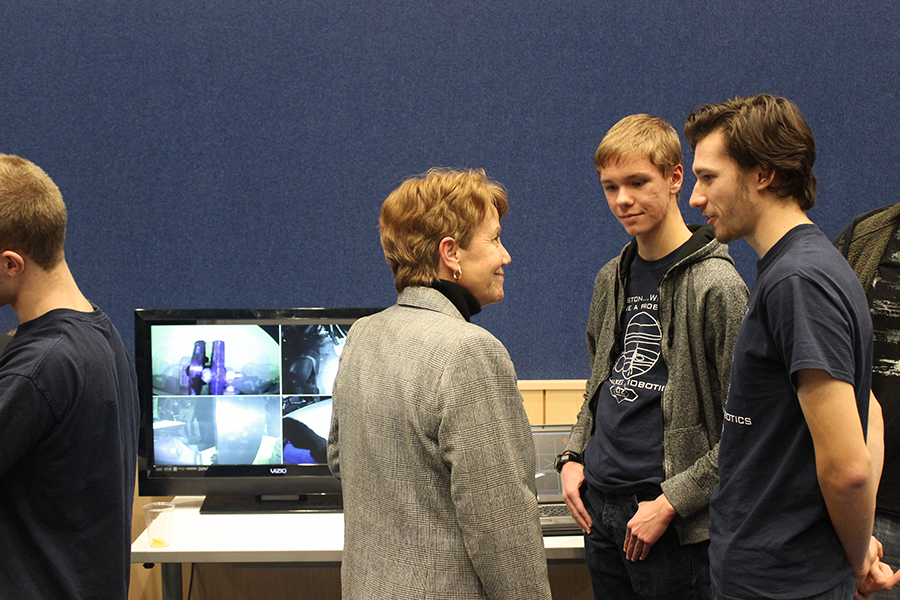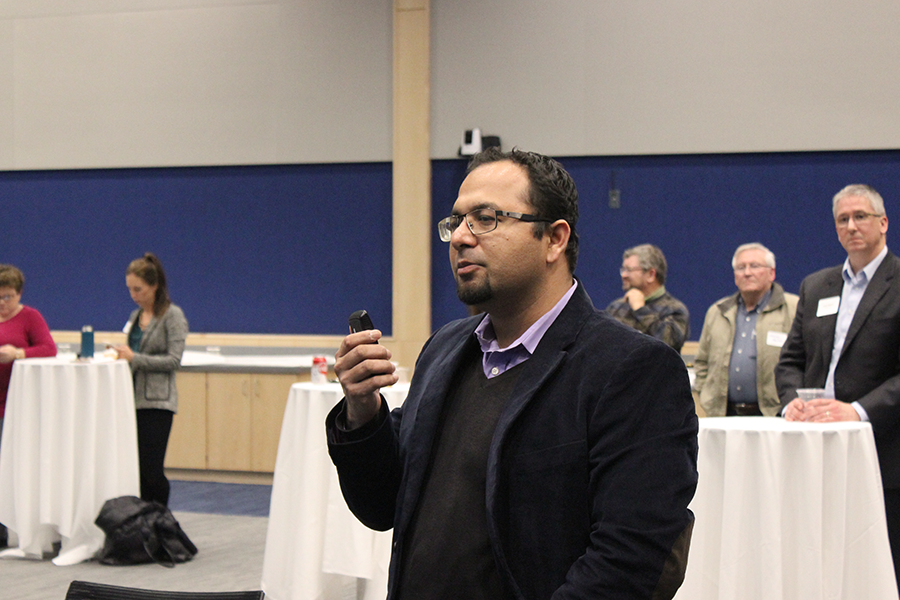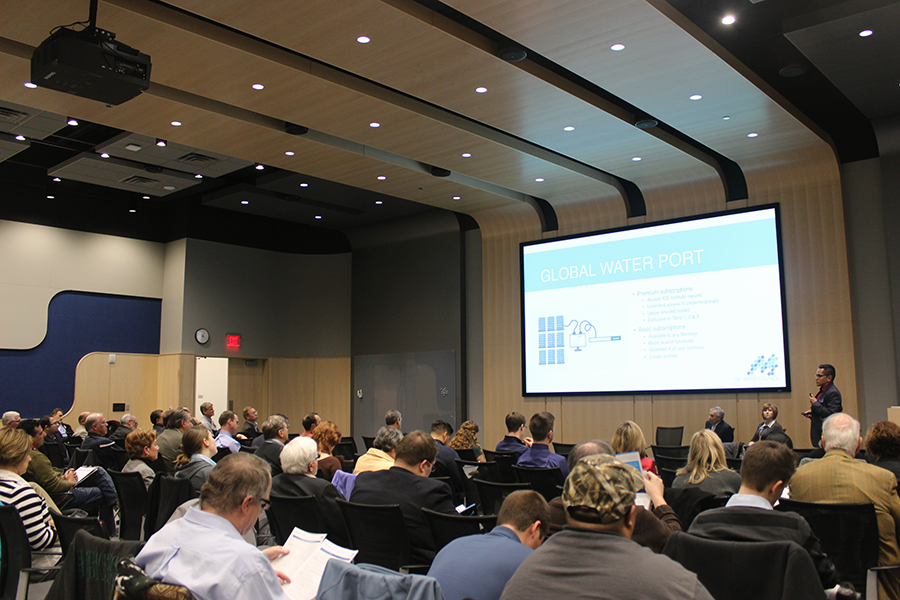Thank you to Badger Meter for hosting our final 2016 Member Meeting!
December 6th marked The Water Council’s final Quarterly Member Meeting of 2016. The meeting served as a comprehensive introduction to the ICE (Innovation Commercialization Exchange) Institute and The Water Council’s new Membership Benefits & Dues Structure to its members. Badger Meter hosted the meeting in their new Customer Experience Center, providing a tour of the new facility prior to the start of the meeting.
KEYNOTE CONVERSATION: THE NEXT EVOLUTION OF THE WATER COUNCIL
The entire Q4 meeting was dedicated to providing attendees with a deeper understanding of the newly launched ICE Institute, how that has led to the development of what has become known as The Water Council 2.0, and how membership has evolved simultaneously.
Speakers from The Water Council staff included:
- Dean Amhaus, President & CEO
- Karen Frost, Director of Small Business Development
- Dr. David Garman, Chief Technology Officer
- Isaiah Perez, Member Services & Development Coordinator
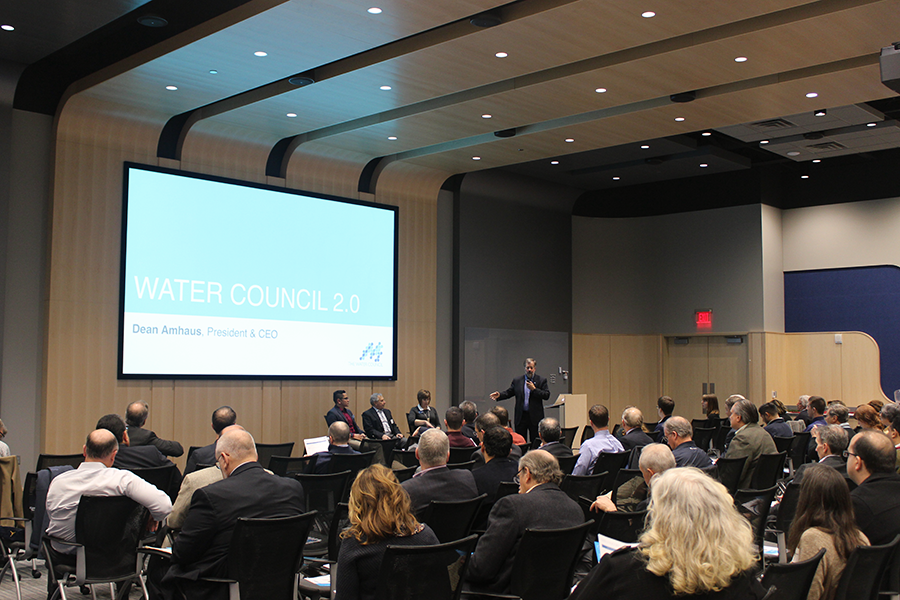 THE WATER COUNCIL 2.0
THE WATER COUNCIL 2.0
Dean Amhaus started the conversation by stressing the importance of the day’s meeting, as it marked an important milestone in the history of The Water Council—not only did the day’s meeting introduce the direction of the organization, but also leads way to the 10th annual Water Leaders Summit in May of 2017.
Amhaus stressed that this next evolution of The Water Council came directly from conversations that took place with members, resulting in the creation of a new membership structure. With that new structure there are significant increases in levels, but also significant increases in value and engagement for members. Adversely, there are opportunities for members to decrease their investment, and to make membership more accessible to companies with limited resources.
Most importantly, The Water Council has further embraced the fact that it is a global organization with members spanning across the country and world. Water Council 2.0 takes the organization to the next level of truly being engaged across the globe.
To understand how The Water Council has come to this point, Amhaus pointed out that these talks stemmed from a call from Senator Tammy Baldwin (D-Wis) in late 2015, alerting The Water Council of funding that would become available through Manufacturing Institutes funded by the Federal Government via the Department of Energy and Department of Defense. In January, The Water Council began developing a pre-proposal to submit for what was called the “WISDM Institute.” After months of meetings with the proposal team, and a week prior to submitting the pre-proposal, Amhaus recalled having second-thoughts regarding the submission. He felt the guidelines and parameters of the Manufacturing Institutes were too restrictive for what The Water Council wanted to do, or was used to operating within.
From its earliest days, The Water Council has done things its own way, and has paved its own path; therefore, following meetings with the Executive Board, it was decided that they would not move forward with pursuing a Federal Manufacturing Institute. However, the months of planning that led up to this decision enabled The Water Council to learn more about itself, and the existing gaps in its services that could potentially be game-changers for the organization. That insight is what has ultimately led to Water Council 2.0, and has paved the way for the next evolution of the organization.
ICE INSTITUTE
Karen Frost and Dr. David Garman took turns to discuss how ICE Institute will operate, and how members can interact with the new initiative, which was the evolution of the pre-proposal that was being worked on over the last year for the national Manufacturing Institutes.
Frost further went into detail on how ICE Institute will operate within The Water Council, utilizing a detailed organizational chart that identified how it aligns with other programs within The Water Council. Dr. Garman’s role as Chief Technology Officer will play a key role in identifying, cataloging, and matching technologies to Water Council members. ICE Institute will look at multiple industry sectors, outlined on an Industry Concentration and Water Risk Map, moving beyond water to engage utilities, agriculture, and manufacturers.
ICE Institute will utilize the Global Water Port to provide personalized reports for top-tier members. These reports will include key items including:
- Patent status and Freedom to Operate reports
- External investment in specific technology/innovation
- Assessments of Technology Readiness Level (TRL)
- External expert review
- Market potential evaluation and ranking
Dr. Garman explained that TRL’s are an industry term used by NASA, that range from TRL 1 to TRL 9, which then leads into Early Stage Commercialization. The higher the number, the higher level of readiness for the technology to move into an early commercialization stage. ICE Institute will examine technologies from TRL 1 all the way through Early Stage Commercialization, as opposed to the original Manufacturing Institute that only would have looked at innovations at TRL 4-6. Dr. Garman further detailed how ICE Institute’s scouts and experts will work closely with each Tier 1 member to identify needs and strategically match them to the most complimentary innovations.
It was also noted that A. O. Smith Corporation, Badger Meter, Rexnord, Milwaukee Metropolitan Sewerage District, University of Wisconsin–Milwaukee, and Marquette University are all confirmed founding members of ICE Institute. Additionally, verbal commitments have been made from various federal labs, some universities outside of Wisconsin, and several international partners that will be made public soon. Contact Dr. David Garman, Chief Technology Officer, at dgarman@thewatercouncil.com for more information about ICE Institute.
MEMBERSHIP 2.0
Isaiah Perez provided a brief overview of the new Water Council Membership Benefits & Dues Structure. Each attendee was provided copies of the new benefits and structure summary (as well as an ICE Institute handout) to review during the meeting. It was stressed that membership has changed as a direct result to speaking with members about their experiences, and what types of benefits they wished to receive. The new structure better categorizes members to more accurately reflect the make-up of the nearly 190 members, and allows them to now choose their level of engagement.
Additional highlights of the new Water Council membership include:
- Clearly defined, categorized benefits
- Cost-sensitive tier structure to choose level of engagement
- Premium subscriptions to Global Water Port
- TWC partner network benefits
- High global visibility via social media impressions and global delegations
- Job and internship board privileges
- Use of new TWC member logo
It was also noted that all current members will be transitioned to the new structure, the majority as Tier 4 members, which is the traditional Water Council membership level. Members can choose to upgrade their membership at any time to take advantage of benefits exclusive to other tiers. Additional questions regarding the new membership structure, or to join The Water Council, can be directed to Isaiah Perez at iperez@thewatercouncil.com.
Again, many thanks to Badger Meter for hosting our Q4 Member Meeting. Details about the 2017 Q1 Member Meeting to come in early January.
VIEW the full presentation from the Q4 Member Meeting.
